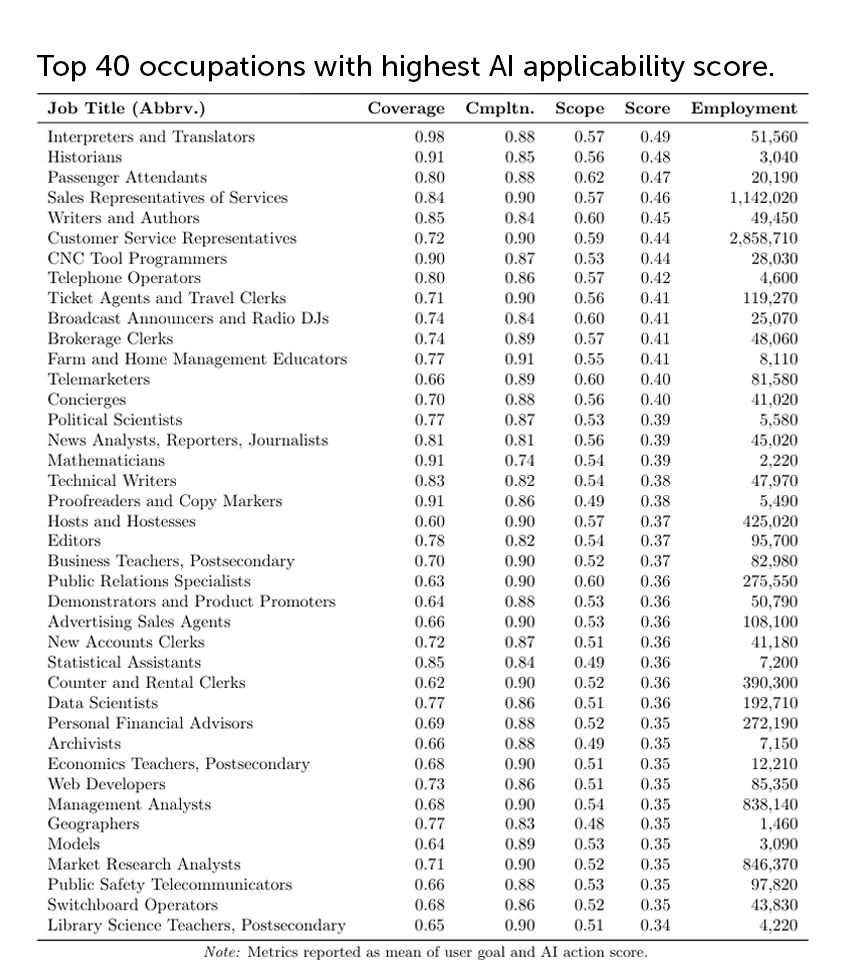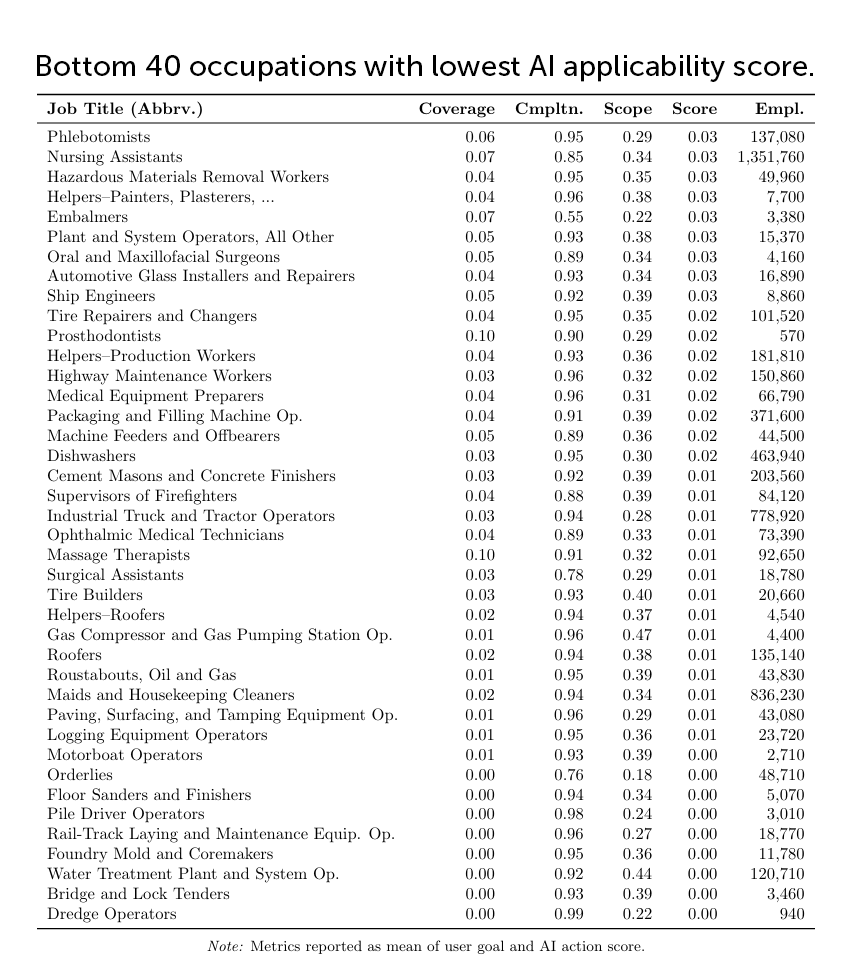Microsoft Study Reveals Who’s Really Using AI at Work—And Who Isn’t
A new Microsoft research paper has just dropped, and it’s one of the more ambitious attempts to map out how generative AI is actually being used in the workplace, read the report here: Working with AI: Measuring the Occupational Implications of Generative AI.
While AI has fueled workers’ anxiety to lose their jobs, more and more people are using chatbots every day, quietly transforming the way we work. And yes, if you are automating your core tasks using ChatGPT’s (it now also makes Excel spreadsheets!), you might be signaling your company that your role can be automated. Though Microsoft researchers insist that a high AI applicability doesn’t mean a profession is at risk, giving the ATM as example, which automated a core task of bank employees. “This led to an increase in the number of bank teller jobs as banks opened more branches at lower costs and tellers focused on more valuable relationship-building rather than processing deposits and withdrawals.”
The researchers created an AI Applicability Score to assess how much AI is already embedded in each occupation. The higher the score, the more deeply AI is involved in the tasks that define that job.
👉 Microsoft proved that employees turn to AI most often (and successfully) for knowledge-heavy tasks such as writing, researching, and summarizing. As a consequence, you find translators, historians and journalists in the list with the professions of high AI penetration.
👉 Manual work on the other hand, is mostly AI free: dredge operators, roofers, dishwashers, and nurses have safe jobs. (May this finally lead to the recognition and fair compensation vocational labor has long deserved!)
There is one surprising finding in the Microsoft study:
💡 People report more fulfillment when researching or creating information about products or services for others (e.g. customers, clients) than when doing the same tasks for themselves. This challenges the narrative that AI reduces meaning in work—it suggests people feel more motivated when their AI-powered output helps someone else.
Other than that, the Microsoft paper doesn’t bare anything fundamentally new and we want to point out that the research comes with limitations:
- The authors gathered 200,000 user interactions with Microsoft Copilot over 9 months. Questions remain about data ethics, even though Microsoft states the data was anonymized.
- It only uses data from one publicly available LLM, so the results don’t reflect the diversity of tools that people use.
- The occupation mapping is based on the U.S.-centric O*NET database (SOC classification), which has known gaps in accuracy and global relevance.
- Most importantly, a single “applicability score” can’t capture the full value a person brings to their job.
🚀 Bottom line: Don’t use AI chatbots to do your work, because it can be used as evidence that they can do it instead of you, or, become a Dredge Operator. Geoffrey Hinton suggested “Train to be a plumber.” Well, the list just got much longer: Motorboat Operator, Massage Therapist, Supervisor of Firefighters, Hazardous Materials Removal Worker 😉




